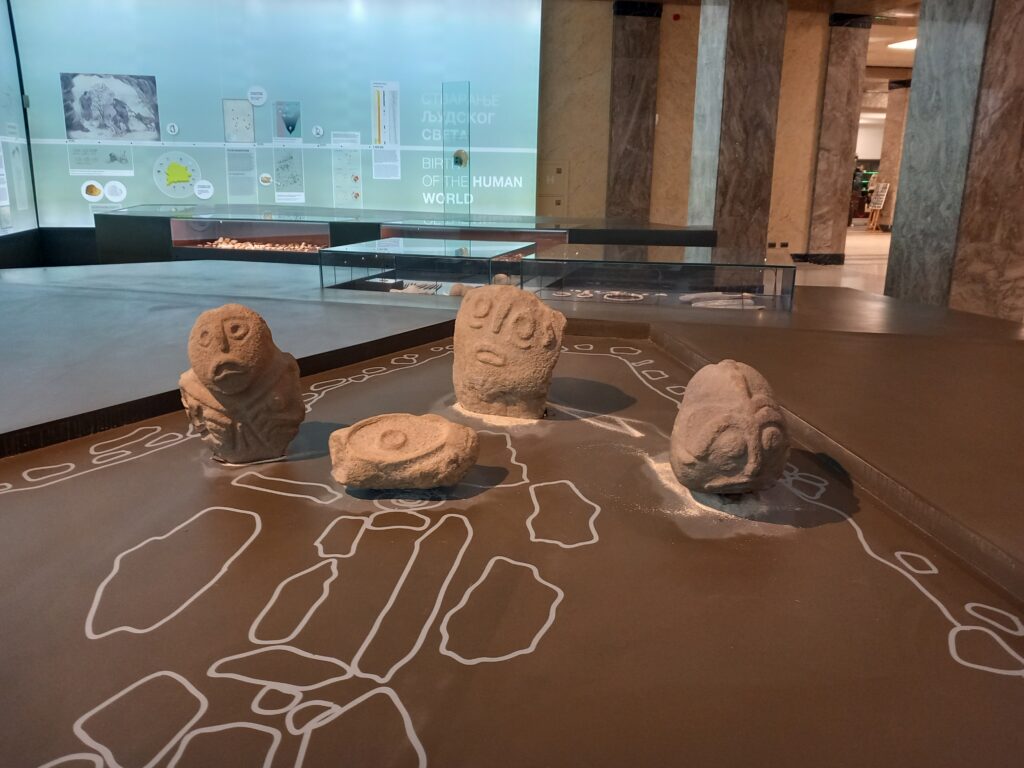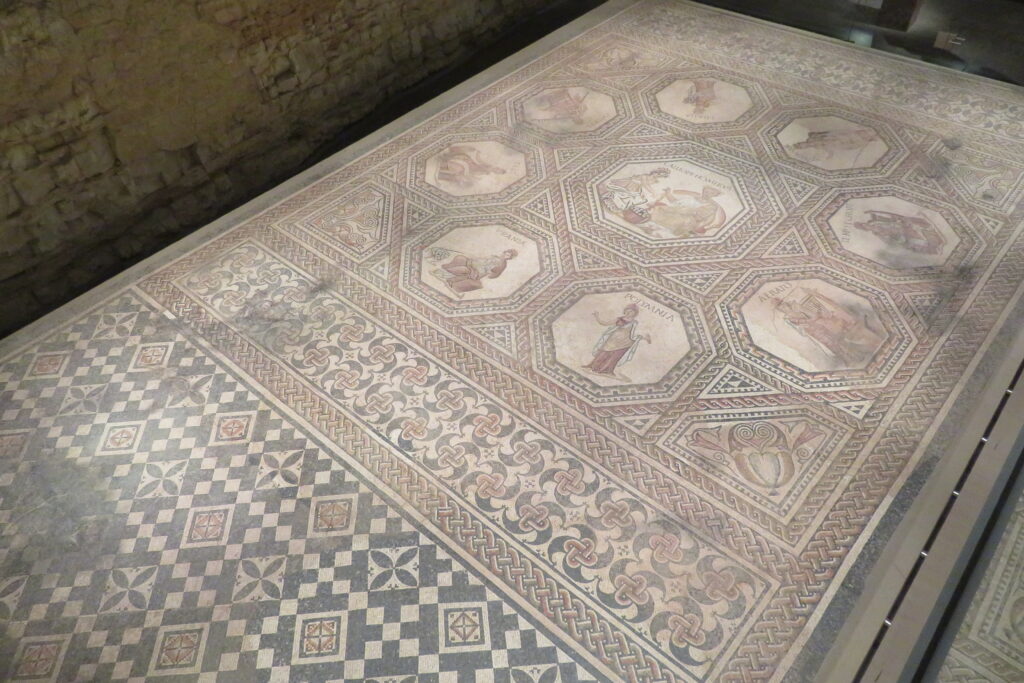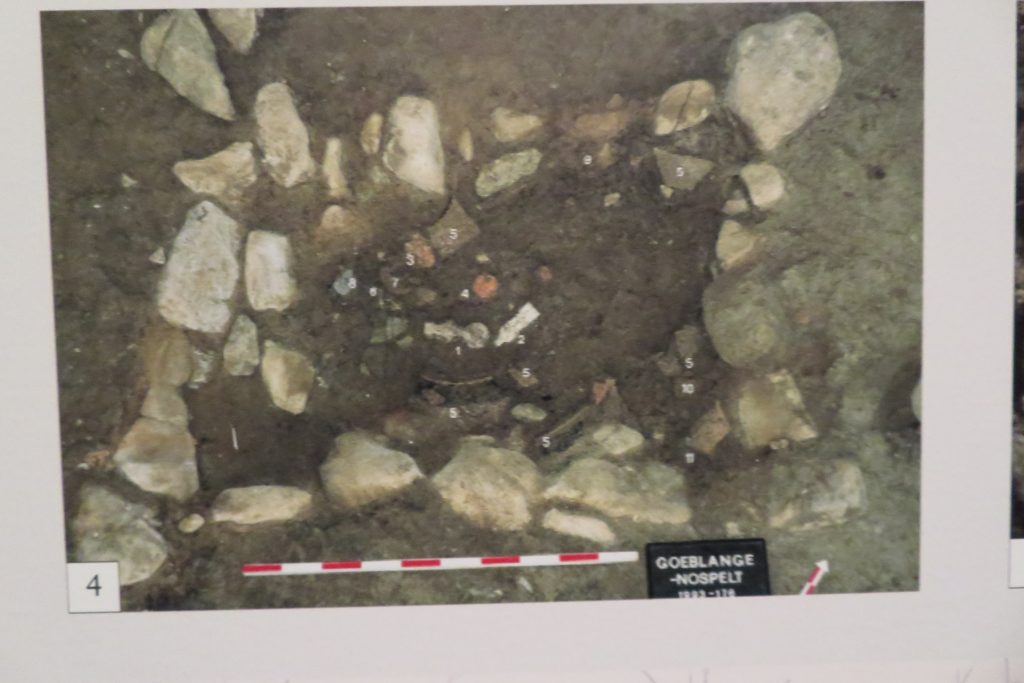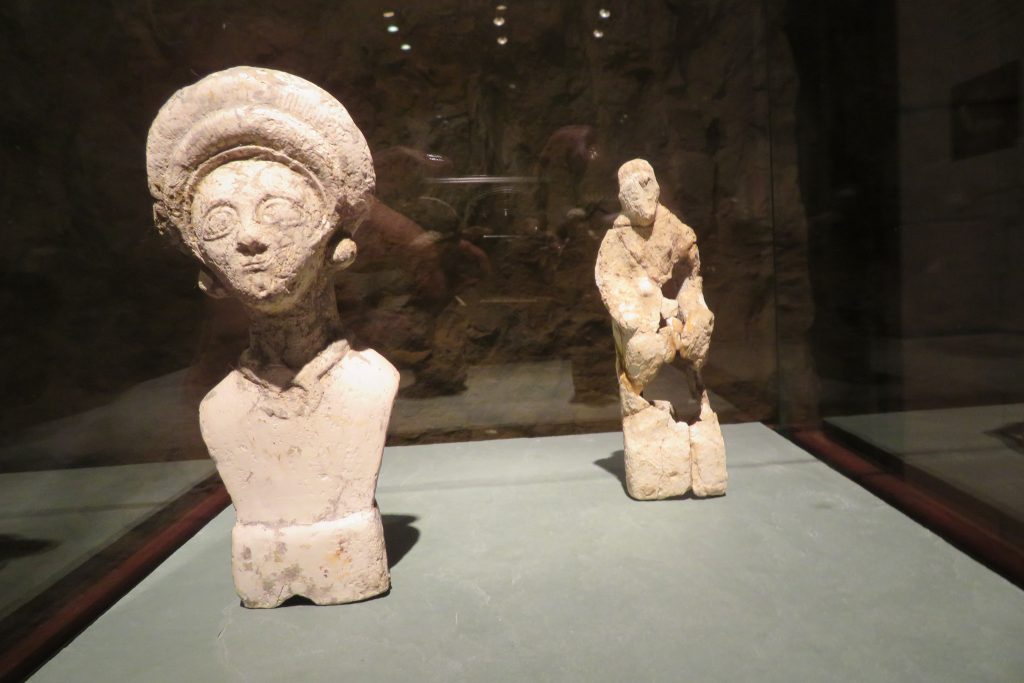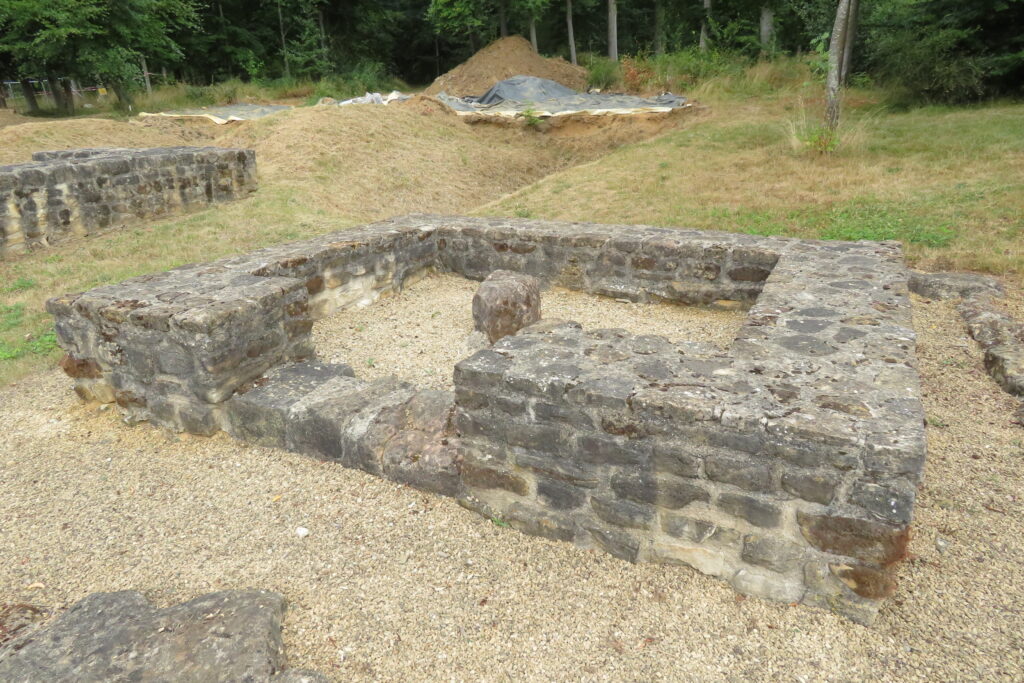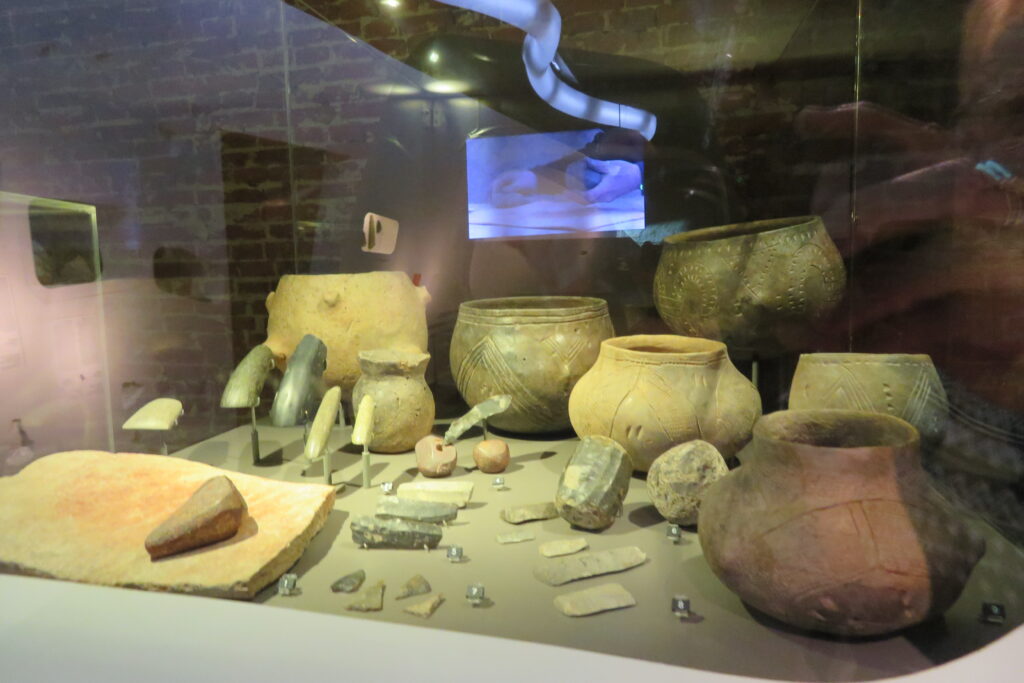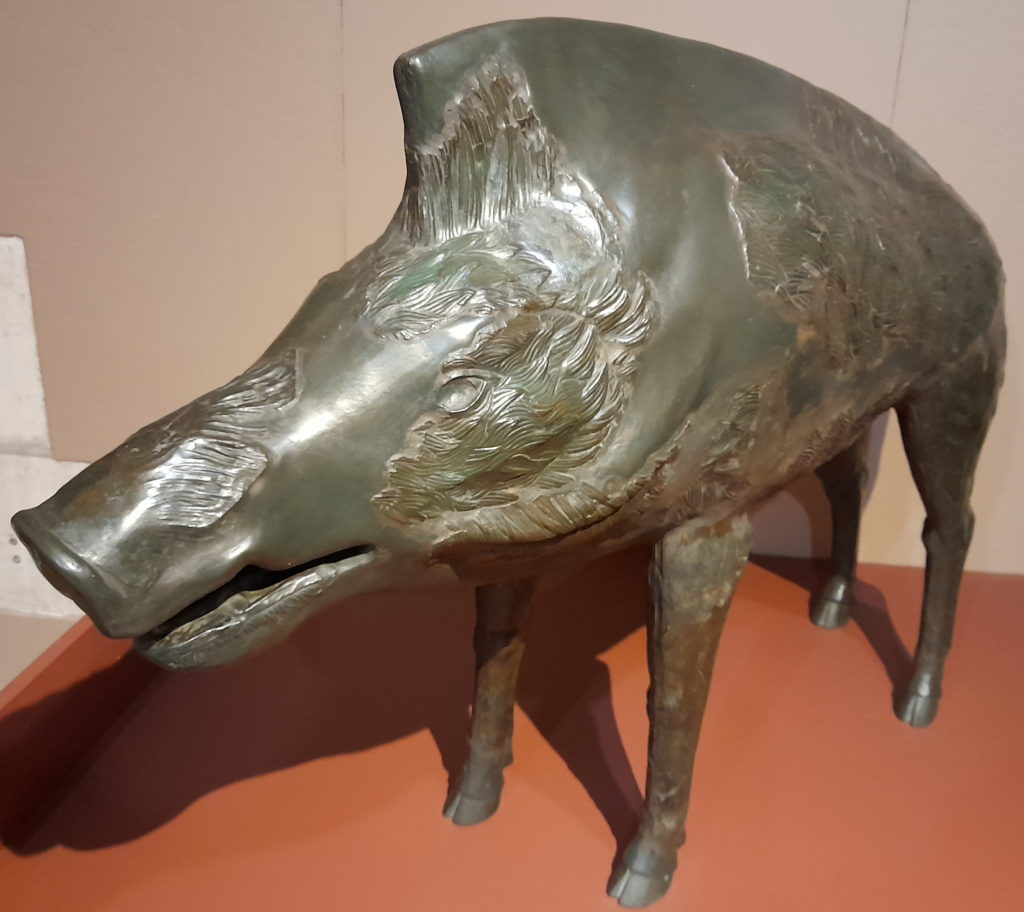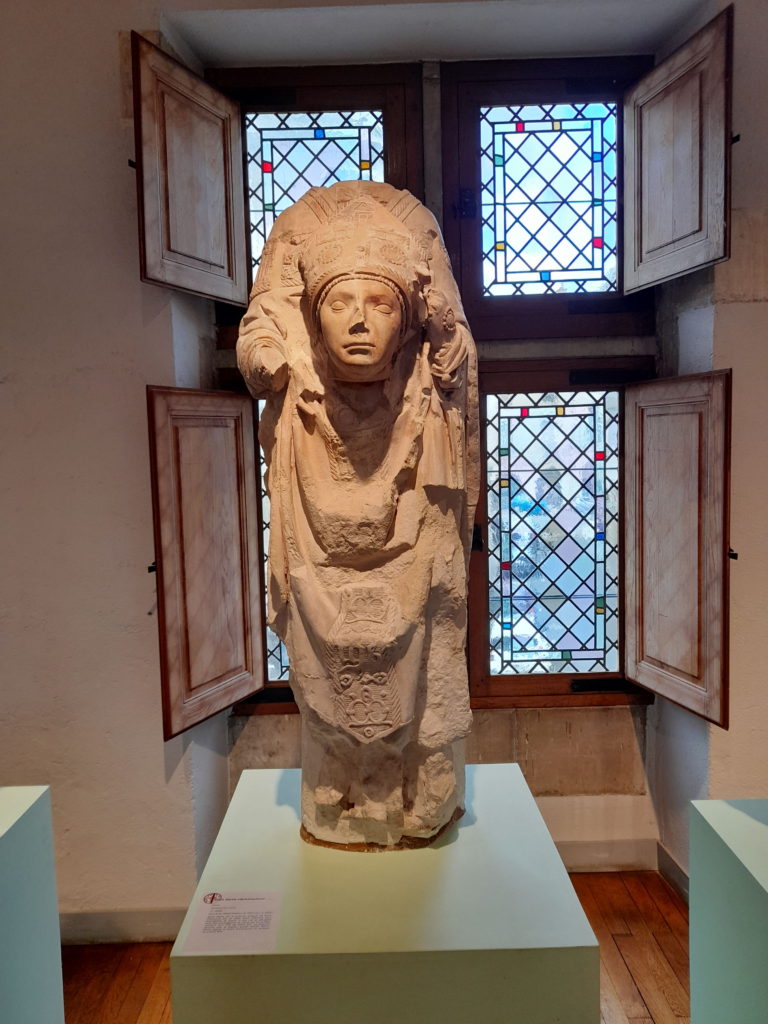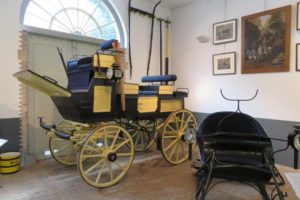

Cyprus Museum is unique! Visitors will feel surprise by the variety of objects shown. Many of them are specific for the island. You can spend hours here, but you can also walk in for just some minutes, to see the gold for example – always one of my favorites 🙂 Entrance is free.
The statues in the two pictures above formed my biggest surprise in Cyprus Museum. Had I known about their existence, I would have paid a visit already years ago. I found out by accident because many visitors came just for these statues. Archaeologists dug them up at the sanctuary of Agia Irina (700-600 BC), 2000 (!) statues all around the altar. Cypriots dit the work together with a Swedish team and part of the findings were donated to the Swedes. You will find them in Stockholm.
The art of exposition
Is Cyprus Museum unique? Yes, already just for this. However, Cyprus Museum can expose these statues so much better. Having such a treasure, originating from your own island deserved a huge room and museum lay-out, just like the pieces in the Archaeological Museum of Amman, Jordan. Some pieces deserve the total headlights, like the Nachtwacht painting of Rembrandt van Rijn in the Rijksmuseum of Amsterdam.
Very old gold
Lots of hidden treasures to be discovered in Cyprus Museum. History starts very early here: for jewelry and gold at 7000 BC.


Unique representations
Look at the objects below: these are unique representations. I love them! Unclear what the one on the left is. On the right maybe the very first representation of child birth (Chalcolithic is 3900-2500 BC).


4000 years old plank shaped art
Moreover I was very impressed by the ‘plank shaped’ pottery. The human body is depicted as an entirely flat surface, schematically rendered, on which a variety of details are incised or rendered with paint (Bronze Age 2100-1600 BC). This is so artistic, it could be modern art also. In the Museum Shop they have some jewelry inspired by these plank shaped stuff.


2500 years old daily life
Unique in Cyprus Museum are also the Crypto-Archaic objects (750-475 BC) that show humans in daily life. They are moving in boats, resting on beds, giving birth to children with the help of other women, making bread and playing music. Isn’t that a wonderful look into daily life 2500 years ago!





And and and and and
And of course there is lots of pottery and pots and statues in bronze and cupper, masks, thrones, coins, funerary steles, funerary limestone lions and sphinxes and so on. It is all very old (as you know, I like very old much more than roman or medieval stuff) and worth watching.



Two last top pieces
I finish this blog with two objects I particularly lliked. Glass objects, especially the small and long one that has the top modelled as a pomegranate (1400-1200 BC). And the maybe oldest depicted cat ever, from the stone age. Even in those times they loved cats enough to make a piece of art for them 🙂


Interested in archaeology and museums? You may also like:
Musée National Luxembourg
Musée d’Angoulême France
Huis van Hilde Netherlands
Villa del Casale Sicily
Bardo Museum Tunisia
National Museum Serbia
Archaeological Museum Gaziantep Turkey


































